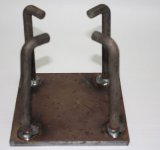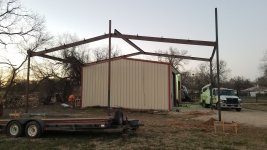fordguy
blah.
- Joined
- Nov 24, 2022
- Member Number
- 5787
- Messages
- 239
I need to put up some lights about 20' up in the air, as well as some shade space to work on stuff.
I see some bury/cement it direct in the ground, others make concrete base and bolt the tube/beam to it
Is one way much better than the other? I am seeing it as bury and pour concrete into the hole a quicker job, versus digging a larger hole and pouring a bse with some J bolts and attaching the tube/beam to that.
Any input aside from that?
Thanks
I see some bury/cement it direct in the ground, others make concrete base and bolt the tube/beam to it
Is one way much better than the other? I am seeing it as bury and pour concrete into the hole a quicker job, versus digging a larger hole and pouring a bse with some J bolts and attaching the tube/beam to that.
Any input aside from that?
Thanks

